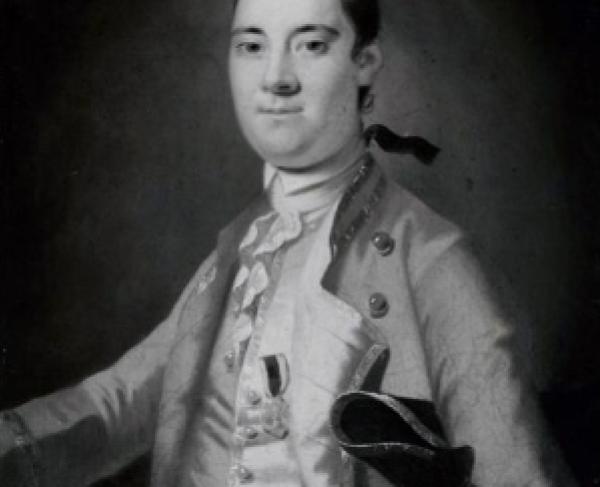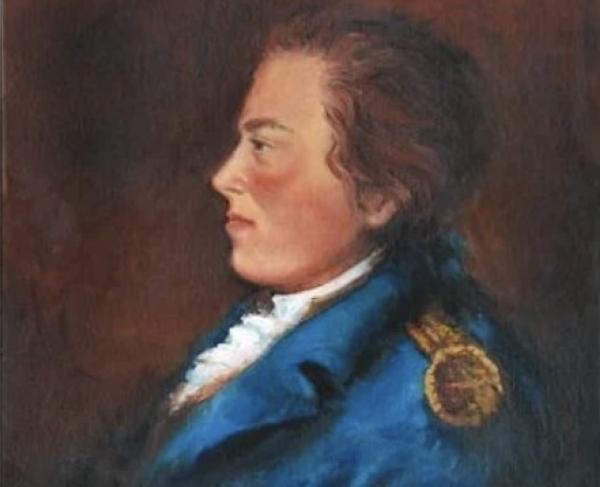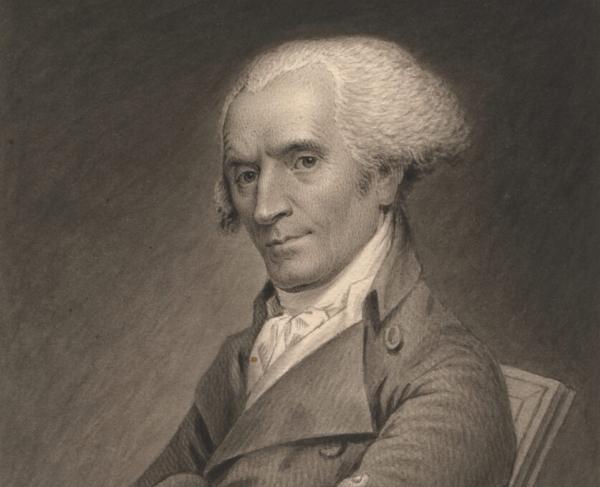William Tryon

William Tryon was born in Surrey, England, in 1729 to Charles Tryon and Lady Mary Shirley. He was not formally or sufficiently educated during his life; instead, he relied on familial connections for his career advancement. He joined the British military in 1751 and was appointed as a lieutenant in the 1st Regiment of Foot Guards before being promoted to Captain that same year. By 1758, Tryon had earned the rank of lieutenant colonel. He led a regiment in the Seven Years War and was wounded at the Battle of St. Cast.
Tryon had a daughter with Mary Stanton; however, he did not marry her. Instead, in 1757, he married heiress Margaret Wake, who had a dowry of £30,000 as well as extensive family connections in the government. Through his now plentiful family connections, Tryon was appointed acting Governor of North Carolina on April 26, 1764. He moved to North Carolina with his family and was soon appointed as official Royal Governor of the North Carolina Colony on July 10, 1765, by King George III.
As Governor, Tryon took action quickly, first seeking to establish a stronger presence of the Church of England within the colony, encouraging the construction of more Anglican churches throughout North Carolina. He was consistently loyal to the British crown, enforcing the agenda passed down to him. When the Stamp Act was passed in 1765, great dissent echoed throughout the colony. Tryon himself opposed the Stamp Act, however, his loyalty to England was strong and he refused to allow North Carolina delegates to attend the Stamp Act Congress as a means to prevent them from passing opposing resolutions to the Act.
Governor Tryon commissioned British architect John Hawks to help him design an elaborate mansion that would act as his residence and as a center for governmental affairs. The North Carolina legislature allocated £5,000 to the construction of his mansion; however, Tryon insisted that he would need at least £10,000 to achieve the baseline of the structure he envisioned. When the legislature would not approve another allocation of money, Tryon convinced them to levy a poll tax on the colonists in the colony, meaning that every settler, regardless of income, would be required to pay the same amount. This angered the lower-class colonists, especially the farmers in the western region of the province.
Aside from the poll tax levied to pay for the mansion, dubbed “Tryon’s Palace,” the colonists were also enraged by other corrupt local officials who were extorting them for goods, money, and land. Eventually, the frustrations of many colonists called the Regulators, boiled over into a series of insurrections against the provincial government in the so-called Regulator War (or the War of Regulation). The colonists had grievances against local officials and Governor Tryon, which they sought to reconcile first with protests, and then with riots. Eventually, Tryon assembled a militia to confront the Regulators. On May 16, 1771, Governor Tryon and his well-trained militia defeated the amateur Regulators at the Battle of Alamance. After the battle, Tryon had seven Regulators executed, and offers pardons to the rest, in exchange for their oaths of loyalty to the government. Some sources also claim that Tryon increased taxes after the Battle to pay for the militia.
Governor Tryon was regarded as an able administrator of the government in North Carolina, creating a postal service within the Province, and encouraging the building of churches and schools; however, his over-taxation, as well as his actions against the Regulators was enough to establish his reputation as a tyrant among the colonists. In 1771, his governorship ended in North Carolina, and he arrived in New York to take over as Royal Governor of that colony. In New York, his administration was efficient. He created a militia and supported a strong defense system. In 1774, he briefly returned to England, a trip during which the American Revolution broke out.
Upon his return to the colonies, Governor Tryon was an immediate target of the Patriots, many of whom wanted him arrested. However, at the behest of General George Washington, Tryon was spared arrest, and instead was carefully watched. In October 1775, he sought refuge on British ships in the New York harbor from which he sought to carry out his administrative duties. He dissolved the New York general assembly and called for reelections hoping to stifle the Patriot movement; however, those reelected were also in favor of colonial independence, causing Governor Tryon to dissolve the assembly once more. In 1776, he was involved in a plot to kidnap George Washington and assassinate his chief officers; however, the plot was discovered and stopped.
As the American Revolution raged on, Tryon retained little actual power as Governor. In 1777, he was appointed as major general of the provincials (and later he was also appointed to colonel in the 70th Regiment of Foot) and British Commander of the forces on Long Island. Tryon was ordered to invade Connecticut and destroy Rebel arsenals in that colony. While in Connecticut, he encountered and defeated Patriot troops at the Battle of Ridgefield. During the war, Tryon was a strong advocate of targeting and attacking civilians. In July 1779, he initiated a series of attacks on Connecticut towns, burning and plundering, hoping to draw George Washington’s troops from the Hudson River area in New York. The colonists were enraged at Tryon for his attacks on the homes and Tryon’s commander was furious with him for disobeying orders and going on his destructive spree.
Tryon returned to England in September 1780 and continued to direct the movements of the 70th Regiment of Foot and was made lieutenant general. In 1784, he was appointed colonel of the 29th Regiment of Foot. He died in 1788, in London. While Tryon was deeply flawed, his conduct unnecessarily savage and disobedient at times, he managed to succeed with the administrative tasks assigned to him. He had success in assembling militaries, establishing a postal service in North Carolina, and promoting the construction of schools and churches. However, overall, Tryon was remembered in America for his actions against the Regulators, his brutality and cruelty towards citizens. In fact, most of the towns within the colonies that were named for him later changed in name to erase association with him.


